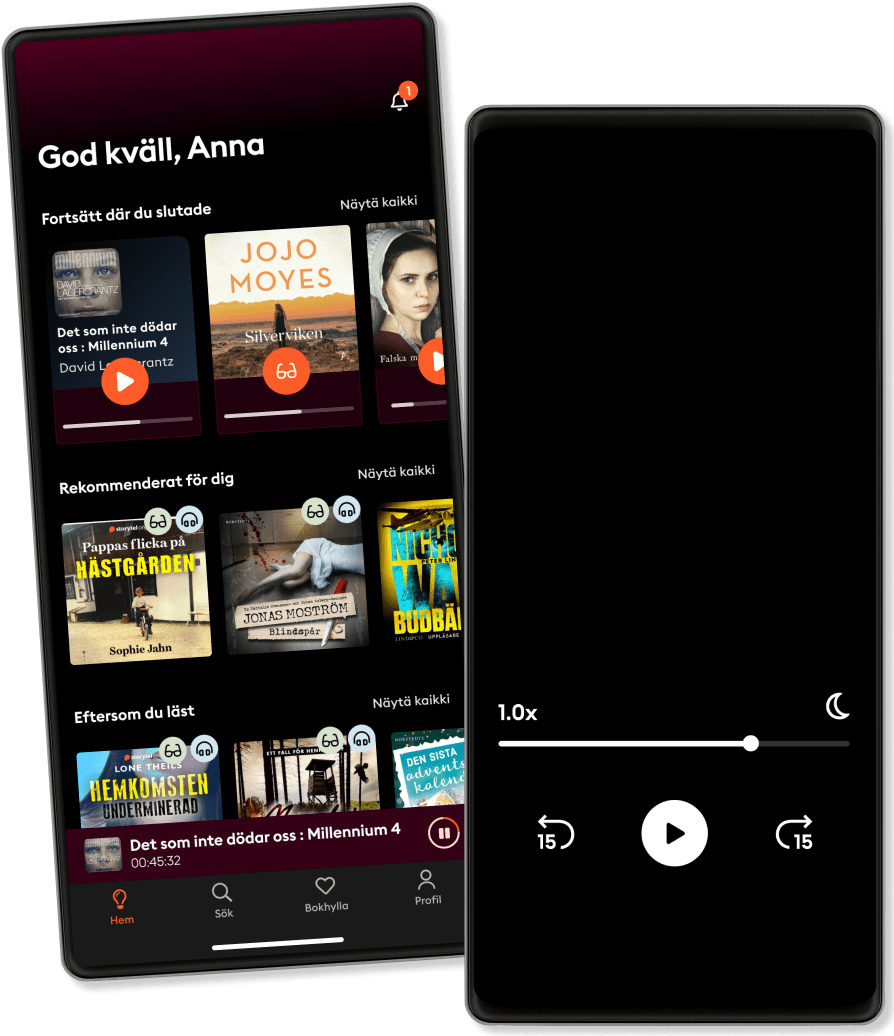Listen and read
Step into an infinite world of stories
- Read and listen as much as you want
- Over 1 million titles
- Exclusive titles + Storytel Originals
- 7 days free trial, then €9.99/month
- Easy to cancel anytime

IPython Interactive Computing and Visualization Cookbook: Over 100 hands-on recipes to sharpen your skills in high-performance numerical computing and data science in the Jupyter Notebook, 2nd Edition
- By
- Publisher
- Language
- English
- Format
- Category
Non-fiction
Learn to use IPython and Jupyter Notebook for your data analysis and visualization work. Key Features • Leverage the Jupyter Notebook for interactive data science and visualization • Become an expert in high-performance computing and visualization for data analysis and scientific modeling • A comprehensive coverage of scientific computing through many hands-on, example-driven recipes with detailed, step-by-step explanations Book Description Python is one of the leading open source platforms for data science and numerical computing. IPython and the associated Jupyter Notebook offer efficient interfaces to Python for data analysis and interactive visualization, and they constitute an ideal gateway to the platform.
IPython Interactive Computing and Visualization Cookbook, Second Edition contains many ready-to-use, focused recipes for high-performance scientific computing and data analysis, from the latest IPython/Jupyter features to the most advanced tricks, to help you write better and faster code. You will apply these state-of-the-art methods to various real-world examples, illustrating topics in applied mathematics, scientific modeling, and machine learning.
The first part of the book covers programming techniques: code quality and reproducibility, code optimization, high-performance computing through just-in-time compilation, parallel computing, and graphics card programming. The second part tackles data science, statistics, machine learning, signal and image processing, dynamical systems, and pure and applied mathematics. What you will learn • Master all features of the Jupyter Notebook • Code better: write high-quality, readable, and well-tested programs; profile and optimize your code; and conduct reproducible interactive computing experiments • Visualize data and create interactive plots in the Jupyter Notebook • Write blazingly fast Python programs with NumPy, ctypes, Numba, Cython, OpenMP, GPU programming (CUDA), parallel IPython, Dask, and more • Analyze data with Bayesian or frequentist statistics (Pandas, PyMC, and R), and learn from actual data through machine learning (scikit-learn) • Gain valuable insights into signals, images, and sounds with SciPy, scikit-image, and OpenCV • Simulate deterministic and stochastic dynamical systems in Python • Familiarize yourself with math in Python using SymPy and Sage: algebra, analysis, logic, graphs, geometry, and probability theory Who this book is for This book is intended for anyone interested in numerical computing and data science: students, researchers, teachers, engineers, analysts, and hobbyists. A basic knowledge of Python/NumPy is recommended. Some skills in mathematics will help you understand the theory behind the computational methods. Cyrille Rossant, PhD, is a neuroscience researcher and software engineer at University College London. He is a graduate of École Normale Supérieure, Paris, where he studied mathematics and computer science. He has also worked at Princeton University and Collège de France. While working on data science and software engineering projects, he has gained experience in numerical computing, parallel computing, and high-performance data visualization. He is the author of Learning IPython for Interactive Computing and Data Visualization, Second Edition, Packt Publishing, the prequel of this cookbook.
© 2018 Packt Publishing (Ebook): 9781785881930
Release date
Ebook: January 31, 2018
Others also enjoyed ...
- Artificial Intelligence Class 2 Team Orange
- Data-Driven Decisions: Mastering Business Data Analytics: Unlocking Insights for Strategic Success Christopher Wilson
- Ultimate ChatGPT Handbook for Enterprises Dr. Harald Gunia
- Relationships 5.0: How AI, VR, and Robots Will Reshape Our Emotional Lives Elyakim Kislev
- Business Technology Development Strategy Bundle: Artificial Intelligence, Blockchain Technology and Machine Learning Applications for Business Systems Bob Mather
- Values, Education and the Human World John Haldane
- Mastering Large Language Models with Python Raj R
- Disruption Ignacio Garcia Alves
- Scientific Explanation and the Causal Structure of the World Wesley C. Salmon
- Summary of Douglas W. Hubbard's The Failure of Risk Management IRB Media
- Fourth Wing (1 of 2) [Dramatized Adaptation]: The Empyrean 1 Rebecca Yarros
4.7
- Fourth Wing (2 of 2) [Dramatized Adaptation]: The Empyrean 1 Rebecca Yarros
4.8
- A Court of Thorns and Roses (1 of 2) [Dramatized Adaptation]: A Court of Thorns and Roses 1 Sarah J. Maas
4.3
- Harry Potter and the Philosopher's Stone J.K. Rowling
4.7
- Fourth Wing Rebecca Yarros
4.6
- From Blood and Ash (1 of 2) [Dramatized Adaptation]: Blood and Ash 1 Jennifer L. Armentrout
4.3
- The Awakening [Dramatized Adaptation]: Zodiac Academy 1 Susanne Valenti
4
- House of Earth and Blood (1 of 2) [Dramatized Adaptation]: Crescent City 1 Sarah J. Maas
4.4
- From Blood and Ash (2 of 2) [Dramatized Adaptation]: Blood and Ash 1 Jennifer L. Armentrout
4.5
- Two Can Play Ali Hazelwood
3.7
- Summary of Atomic Habits by James Clear Best Self Audio
4.3
- The Pumpkin Spice Café Laurie Gilmore
3.3
- A Court of Frost and Starlight [Dramatized Adaptation]: A Court of Thorns and Roses 3.1 Sarah J. Maas
4
- The Fellowship of the Ring J. R. R. Tolkien
4.8
- How to Talk to Anybody About Anything J.H. Marsh
3.2
This is why you’ll love Storytel
Listen and read without limits
Enjoy stories offline
Kids Mode (child-safe environment)
Cancel anytime
Unlimited
Listen and read as much as you want
1 account
Unlimited Access
Offline Mode
Kids Mode
Cancel anytime
English
International